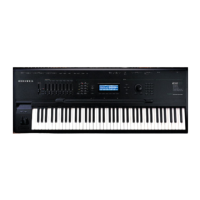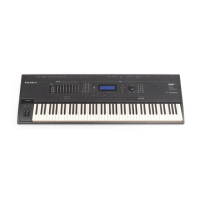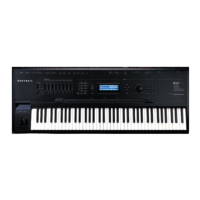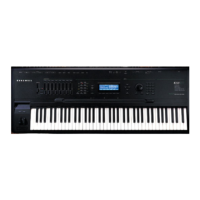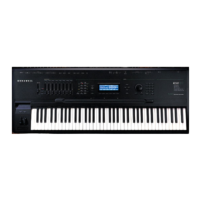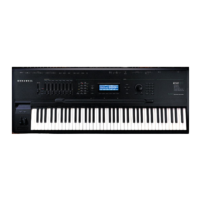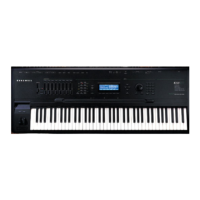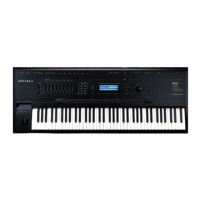DSP Functions
Pitch / Amplitude / Panner
14-32
PANNER
This single-stage function converts a single wire at its input into a double wire at its output,
splitting the signal between an “upper” and “lower” wire. This creates the double-output
algorithm we discussed in Chapter 6. The parameters on the PANNER page enable you to
modify the signal’s routing through the upper and lower wires. By itself the PANNER doesn’t
change the pan position of the sound. It just defines what percentage of the currently selected
layer’s sound goes to each wire. When you select one of these double-output algorithms, the
OUTPUT page for the layer changes to enable you to make pan settings for each wire
independently. So when you use the PANNER function, you’ll also want to adjust the Pan
parameters on the OUTPUT page, setting the upper wire’s pan fully right, and the lower wire’s
pan fully left. This will enable you to hear the effect of the PANNER function.
The PANNER function is available only in algorithms 2, 13, 24, and 26, and always appears in
the block before the final AMP function. Consequently, it will always be selected with the F3
soft button, which is labeled “F3 POS” (position).
EditProg:F3|POS(PANNER)||||<>Layer:1/1||
Adjust:0%|||||||||||Src1||:OFF||||||||||
||||||||||||||||||||Depth|:0%|||||||||||
||||||||||||||||||||Src2||:OFF||||||||||
KeyTrk:|0.0%key|||||DptCtl:OFF||||||||||
VelTrk:0%|||||||||||MinDpt:0%|||||||||||
Pad|||:0dB||||||||||MaxDpt:0%|||||||||||
<more||F1|||||F2|||||F3|POS|F4|AMP|more>
PARAMETER RANGE OF VALUES
ADJUST ± 100%
KEY TRACKING ± 16%/key
VELOCITY TRACKING ± 200%
PAD 0, 6, 12, 18 dB
SOURCE 1 Control Source list
SOURCE 1 DEPTH ± 200%
SOURCE 2 Control Source list
SOURCE 2 DEPTH CONTROL Control Source list
MINIMUM DEPTH, SOURCE 2 ± 200%
MAXIMUM DEPTH, SOURCE 2 ± 200%
The Adjust parameter sets the initial routing of the layer to the upper or lower wire. -100% is
the lower, and 100% is the upper. The KeyTrk parameter lets you shift the layer’s sound from
one wire to the other based on the MIDI key number of each note. For positive values of
KeyTrk, the higher above Middle C, the more sound goes to the upper wire.
The remaining parameters have ranges from -200% to 200%. This lets you start with a sound
that’s fully on the lower wire, for example, and shift it completely to the upper wire. The VelTrk
parameter shifts notes between wires based on the attack velocity of each note. For positive
values, the higher the attack velocity, the more sound goes to the upper wire. The Src1 and Src2
parameters let you assign controls to reroute the sound relative to the initial routing. Setting
their depth parameters to positive values will shift the sound to the upper wire when the
controls assigned to them approach their maximum values.
Upper and Lower Amp (AMP U AMP L)
This two-stage function is similar to the AMP function described above, but it appears in
algorithms that have split the signal to two wires and has sent them through different DSP
functions in the F2 and F3 blocks. This function enables you to set the final amplitude

